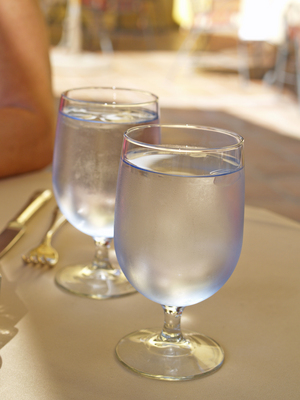The hottest topic in food and diet today has been on increasing vitamin D. According to the New York Times, the Institute of Medicine changed its recommendations on the amount of vitamin D required by children and adults . These guidelines tell individuals how much of the vitamin should be taken and how much might be too much. If a person is vitamin D deficient it can lead to poor bone health and other issues related to bone density. Young children and adolescents are the most vulnerable to vitamin D deficiency as their bones are forming and growing. Elderly individuals (especially women) require even more vitamin D as diseases that affect bone density can play havoc on the bones.
It is recommended that children and adults (under about age fifty years) consume about 600 IU (international units) of vitamin D a day. This particular vitamin is fat soluble, which means it can accumulate in the fat cells of a person. This also means that you can overdose if too much of the vitamin was ingested because it is stored in the fat cells of a human until needed. The human body will automatically produce vitamin D in response to exposure to ultraviolet rays from the sun. However, many individuals do not get enough sunlight (especially in the winter). The rise of skin cancer and increased use of sun block can also stop production of vitamin D because ultraviolet rays are unable to induce the body to create it if blocked.
In order to add this vitamin to the diet, foods that are rich in vitamin D should be added to the diet in order to prevent deficiency. The most efficient way to add vitamin D to the diet is by drinking milk. Milk is unique because it facilitates the absorption of vitamin D simultaneously with the calcium it contains. Yogurt can also add additional vitamin D to the diet. Cheese and dairy items also contain a fair amount of the vitamin. The next time you eat some pasta, sprinkle some fresh cheese on it. Every little addition can make a big difference. Dairy products are a great source of vitamin D and are in large supply in the American diet.
A great way to add vitamin D to the diet is to eat fortified cereal that already contains a fair amount of the vitamin. Cereal is easy because it doesn’t require planning. It is convenient to choose your favorite cereal and enjoy. Most of the cereals in the grocery store today contain between 150 and 200 IU (International Units) of vitamin D. An individual who starts their day with cereal and milk has already significantly increased their intake of vitamin D. If an orange juice fortified with vitamin D is also added, the daily recommended intake of this vitamin might be met.
Food sources of vitamin D are easy to find if you like fish. Fatty fish are great sources as well as some shellfish. Fish such as salmon, catfish, trout, halibut, herring and sardines to name a few. Even oysters are very high (as much as 900 IU) in vitamin D. If you are not a fish lover, then cod liver oil (1 tablespoon) can be added to your diet. If none of these protein sources sound appealing, grab some eggs and make a nice omelet. The egg yolk contains some vitamin D. Beef liver is also a fair source of this vitamin.
Finally, vitamin D can be found in vegetables and soy (including soy milk). It should be noted that vegetables alone are not sufficient to provide the necessary amount of vitamin D. Musare a good source of vitamin D and are easily added for additional flavor in cooking. The same can be said for canned mushrooms. This is also the case for potatoes which make excellent side dishes. Soy milk and products also are fortified with vitamin D and can make an excellent supplement for this vitamin.




